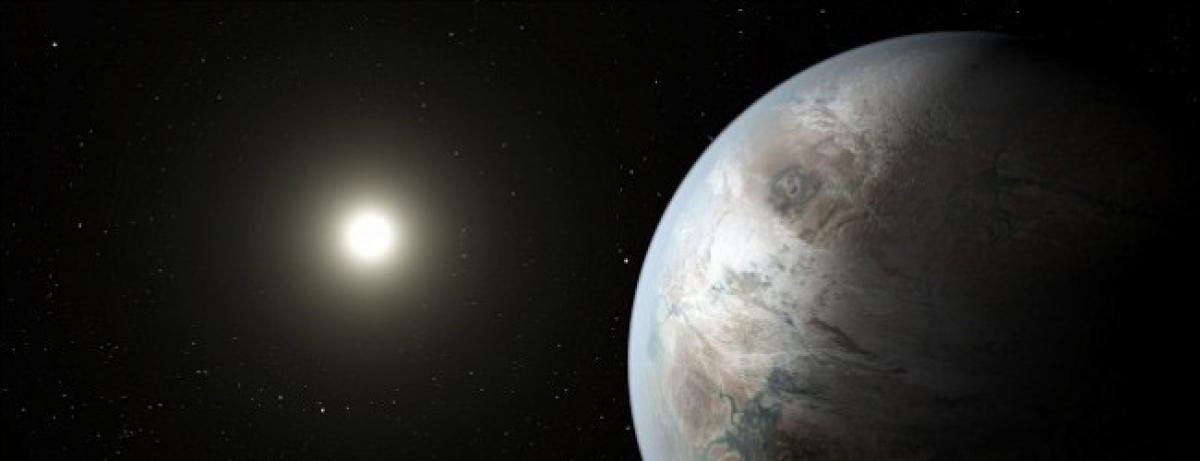Live
- Bird walk held in Kagaznagar
- ‘DEET app a bridge between unemployed & firms’
- Ponnam distributes sewing machines to NAC-trained women
- U19 WC: Sri Lanka women thrash hosts Malaysia by 139 run
- Fervour marks Thyagaraja fete
- Messi scores in Inter Miami CF preseason win over Club America
- ‘Everyone must practise road safety’
- Railway milestone: 18-coach trial run on Katra-Budgam track in J&K
- 22 Maoist militia members surrender
- Transforming MBNR’s academic landscape
Just In

Using data from NASA\'s Spitzer Space Telescope, an international team of astronomers that also includes an Indian-origin scientist has for the first time obtained the most detailed “fingerprint” of a super-Earth planet -- a rocky planet nearly two times as big as ours.
London: Using data from NASA's Spitzer Space Telescope, an international team of astronomers that also includes an Indian-origin scientist has for the first time obtained the most detailed “fingerprint” of a super-Earth planet -- a rocky planet nearly two times as big as ours.
The efforts led to the first temperature map that reveals extreme temperature swings from one side of the “55 Cancri e” planet to the other and hints that a possible reason for this is the presence of lava flows.
"We have entered a new era of atmospheric remote sensing of rocky exoplanets," said study co-author Nikku Madhusudhan from the institute of astronomy at the University of Cambridge.
“It is incredible that we are now able to measure the large scale temperature distribution on the surface of a rocky exoplanet,” he added.
According to the team led by Cambridge, conditions on the hot side of the planet are so extreme that it may have caused the atmosphere to evaporate, with the result that conditions on the two sides of the planet vary widely.
Temperatures on the hot side can reach 2500 degrees Celsius while temperatures on the cool side are around 1100 degree Celsius.
“55 Cancri e” orbits a sun-like star located 40 light years away in the Cancer constellation.
It is a 'super Earth' - a rocky exoplanet about twice the size and eight times the mass of Earth and orbits its parent star so closely that a year lasts just 18 hours.
The planet is also tidally locked, meaning that it always shows the same face to its parent star, similar to the Moon, so there is a permanent “day” side and a “night” side.
Since it is among the nearest super Earths whose composition can be studied, 55 Cancri e is among the best candidates for detailed observations of surface and atmospheric conditions on rocky exoplanets.
“We haven't yet found any other planet that is this small and orbits so close to its parent star, and is relatively close to us, so 55 Cancri e offers lots of possibilities," added Dr Brice-Olivier Demory from Cambridge and the paper's lead author.
“We still don't know exactly what this planet is made of - it's still a riddle. These results are like adding another brick to the wall, but the exact nature of this planet is still not completely understood,” he added in the paper appeared in the journal Nature.
According to Demory, one possibility for this variation could be either a complete lack of atmosphere, or one which has been partially destroyed due to the strong irradiation from the nearby host star.
Another possibility for the huge discrepancy between the day side and the night side may be that the molten lava on the day side moves heat along the surface, but since lava is mostly solid on the night side, heat is not moved around as efficiently.
What is unclear however, is where exactly the 'extra' heat on 55 Cancri e comes from in the first place.
The researchers may have to wait until the next generation of space telescopes are launched to find out.
In 2018, the successor to Hubble and Spitzer - the James Webb Space Telescope - will launch, allowing astronomers to look at planets outside our solar system with entirely new levels of precision.

© 2025 Hyderabad Media House Limited/The Hans India. All rights reserved. Powered by hocalwire.com







